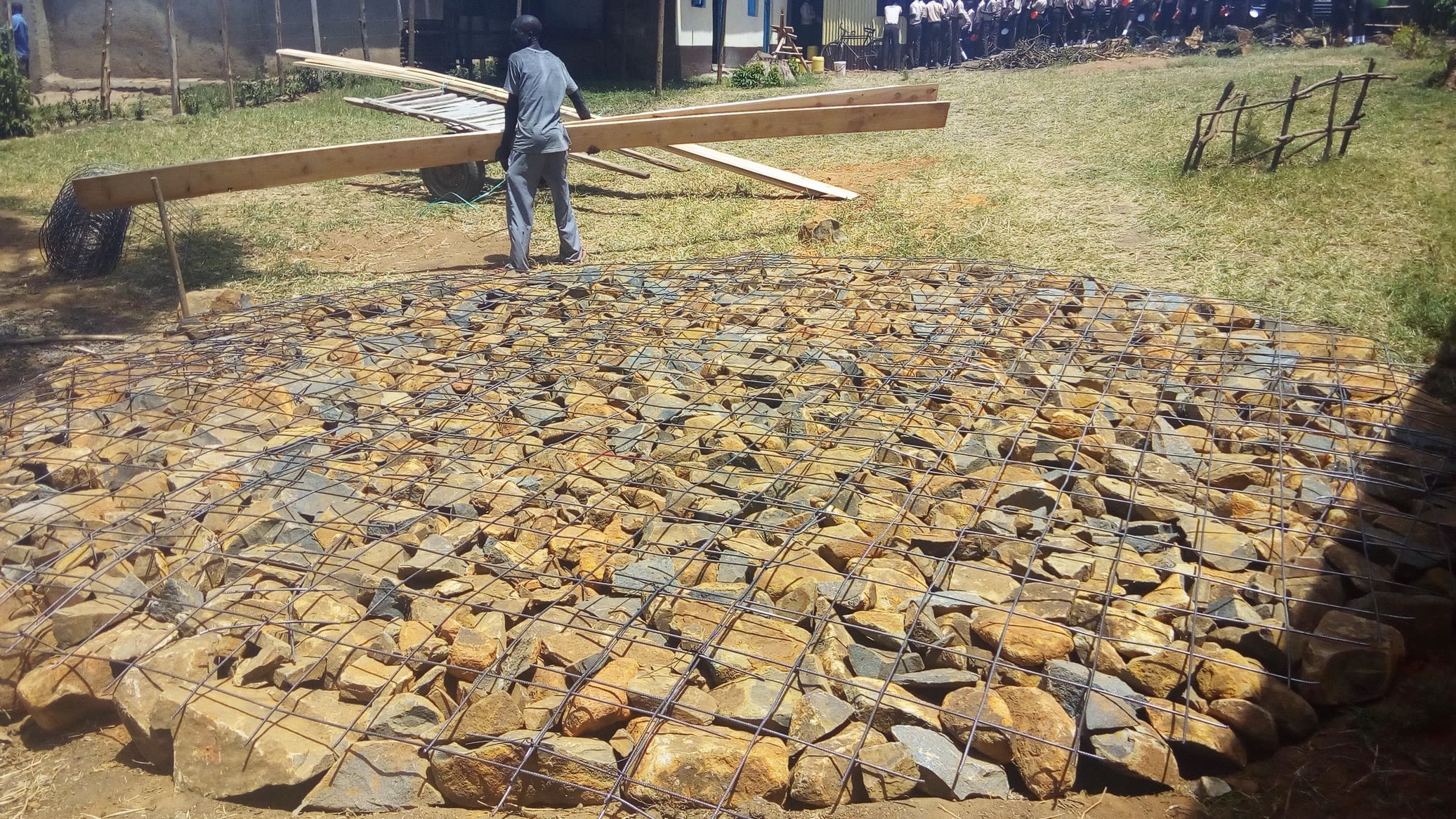The area around Shibale Secondary School is absolutely covered with sugarcane! Most farmers choose to specialize in sugarcane because of the nearby Mumias Sugar Factory, which buys their crops.
Shibale Secondary School is a place of learning for 200 students, of which 98 are boys and 112 are girls. The school employs nine teachers and three support staff.
Students start streaming into school by 7am each weekday, carrying their schoolbags and jugs of water. After some water is dropped off at the kitchen, the students use the remainder for cleaning latrines and classrooms. Everyone gathers outside at 8am for assembly, when the teacher on duty makes announcements. Regular classes get out before dinner, and are only interrupted by a few minutes, besides and hour for lunch.
Water
Students must carry water to school every morning because there's no water source on school grounds. They'll find this water either at home or on the way to school - wherever it is most convenient.
The nearby primary school is connected to a water pipeline, but they find that half the time it's been shut off at the source. When either of these alternatives fail to be enough for drinking, cooking, and cleaning, the school has to order a boozer from Mumias Sugar Factory. This large truck fills up with water at a river flowing beside a dirt road between the school and factory.
And because the river is by the factory, users are concerned that it is contaminated by waste discharged directly from the factory. After drinking this water, students suffer from stomachaches, headaches, and diarrhea.
Besides constant sicknesses and resulting absences, administration told us that they've had to buy so much water this last year that they're struggling financially.
Sanitation
There are only two latrine doors shared between students and teachers. Though they're in good structural condition, they're filthy because of overuse and a shortage of water for cleaning. The male students admit that they prefer going behind other school buildings.
There are no hand-washing stations, nor would there be enough water to spare.
Teacher Elizabeth Busulu said, "We are so desperate in this school as we have no water source at the school compound. We spent a lot of money just to get water, and that water is even not safe for drinking as it's contaminated but we have no choice. We also have only two doors of latrines that are shared between the teachers and pupils, and surely we are facing a closure notice if the need is not addressed as soon as possible. Kindly consider us. We have seen what you did at Mumias Central and if we can be considered we shall be very grateful."
Here's what we plan to do about it:
Training
Training will be held for two days. The facilitator will use PHAST (participatory hygiene and sanitation transformation), ABCD (asset-based community development), CTC (child to child), lectures, group discussions, and handouts to teach health topics and ways to promote good practices within the school. The CTC method will prepare students to lead other students into healthy habits, as well as kickstart a CTC club for the school. This CTC club will oversee the new facilities, such as hand-washing stations, and make sure they are kept clean and in working condition. The two hand-washing stations will be delivered to the school, and the club will fill them with water on a daily basis and make sure there is always a cleaning agent such as soap or ash.
VIP Latrines
Two triple-door latrines will be constructed with local materials that the school will help gather. Three doors will serve the girls while the other three serve the boys. And with a new source of water on school grounds, students and staff should have enough to keep these new latrines clean.
Rainwater Catchment Tank
A 50,000-liter rainwater catchment tank will help alleviate the water crisis at this school. The school will also help gather the needed materials such as sand, rocks, and water from the spring for mixing cement. Once finished, this tank can begin catching rainfall that will be used by the school’s students and staff. Students will no longer be responsible to find enough water to carry to school every day, nor will the school have to pay for dirty water.
We and the school strongly believe that with this assistance, standards will significantly improve. These higher standards will translate to better health which will unlock the potential for higher academic achievement.
This project is a part of our shared program with Western Water And Sanitation Forum (WEWASAFO). Our team is pleased to provide the reports for this project (edited for readability) thanks to the hard work of our friends in Kenya.

 Rainwater Catchment
Rainwater Catchment
 Rehabilitation Project
Rehabilitation Project































